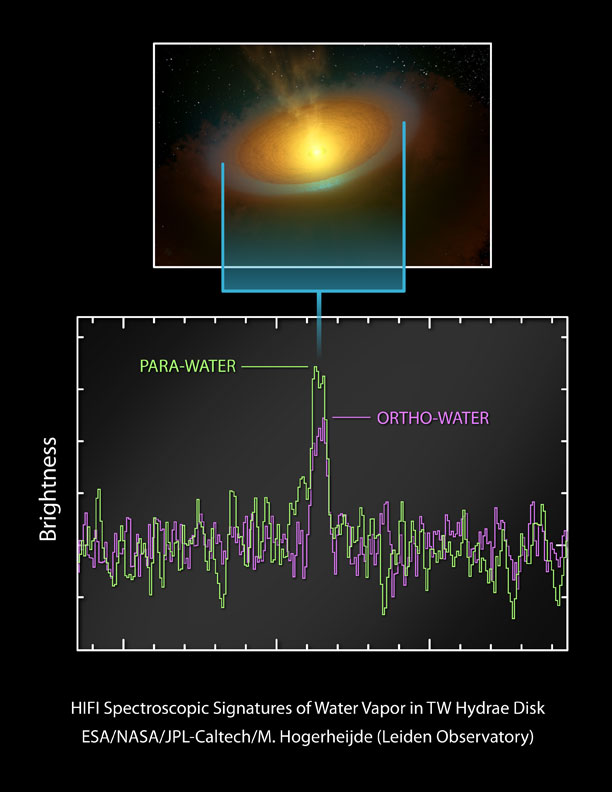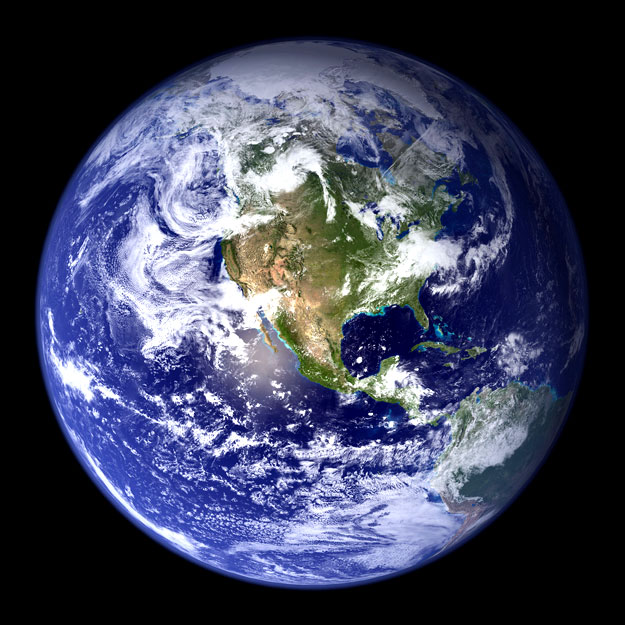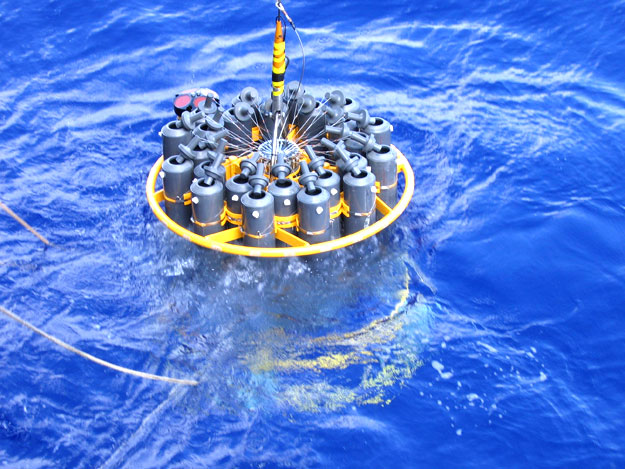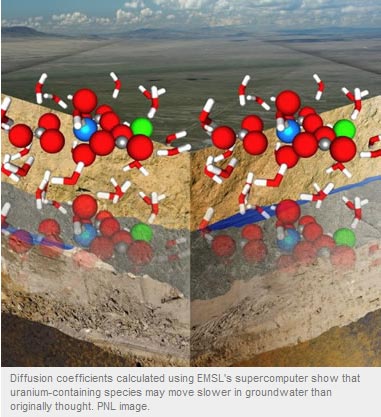PASADENA, Calif. — Using data from the Herschel Space Observatory, astronomers have detected for the first time cold water vapor enveloping a dusty disk around a young star. The findings suggest that this disk, which is poised to develop into a solar system, contains great quantities of water, suggesting that water-covered planets like Earth may be common in the universe. Herschel is a European Space Agency mission with important NASA contributions.
Scientists previously found warm water vapor in planet-forming disks close to a central star. Evidence for vast quantities of water extending out into the cooler, far reaches of disks where comets take shape had not been seen until now. The more water available in disks for icy comets to form, the greater the chances that large amounts eventually will reach new planets through impacts. Read more






